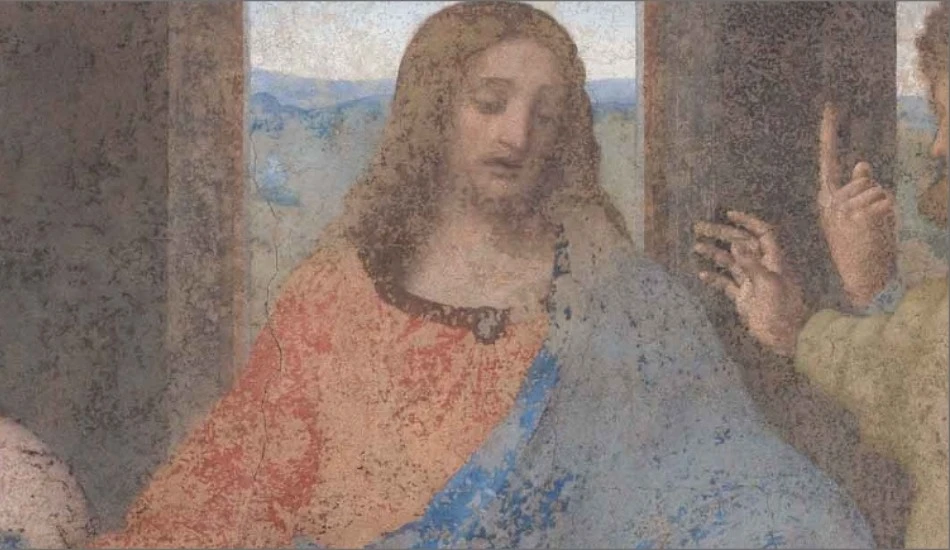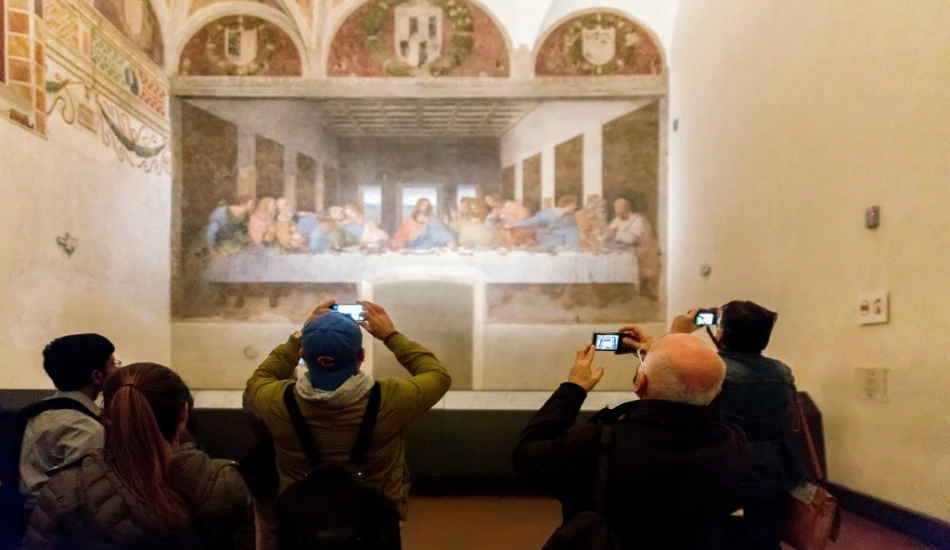Some things in life you only get one real chance to see, and Leonardo’s The Last Supper is one of them.
It’s not in a museum, not in a frame, and not going anywhere; yet it’s fading, quietly, year by year.
You get just 15 minutes to stand in its presence, in the exact room where da Vinci painted it 500 years ago.
This article helps you prepare for that moment, with everything you need to know before you walk through those doors.
Where to find The Last Supper in Milan, and why it’s a must-see?
Leonardo da Vinci’s The Last Supper is housed in the refectory of Santa Maria delle Grazie, a 15th-century Dominican convent in Milan.
It captures the moment Jesus announces his betrayal, frozen in raw emotion and masterful detail.
Painted between 1495 and 1498, it’s considered one of the greatest works of Western art, not just for its beauty, but for how it changed the way we tell stories through painting.
RECOMMENDED
Opening hours of Santa Maria delle Grazie
How to reach Santa Maria delle Grazie
Interesting facts about The Last Supper
What to see at the Last Supper church
Why you only get 15 minutes to see The Last Supper ?

Da Vinci’s experimental painting method, using tempera and oil on dry plaster, let him work slowly but made the mural highly vulnerable.
Over the centuries, it suffered from environmental damage, botched restorations, and even a door cut through it in 1652.
Today, strict measures protect what’s left:
- Entry in groups of 40 people max
- View time limited to 15 minutes
- Air is filtered to preserve stability
A 21-year restoration finished in 1999 now lets visitors see it in as close to original form as possible.
Visitor info at a glance
| Info | Details | Notes |
|---|---|---|
| 📍 Location | Piazza di Santa Maria delle Grazie, Milan. | 20-minute walk from the Duomo |
| 🕒 Opening hours | Tue–Sun: 8.15 am–7 pm | Closed Mondays |
| ⏳ Duration | 15-minute visit per group | Arrive 20 minutes early |
| 🎟️ Tickets | Mandatory, timed-entry only | No walk-ins |
| 📷 Photography | Allowed (no flash) | Videos not permitted |
How to book Last Supper tickets in Milan (before they sell out)
Tickets must be booked in advance. There’s no option to buy at the door.
Slots often sell out weeks ahead.
Here’s how to secure your entry:
- Explore variety of tickets available online
- Consider guided tours as they often include guaranteed entry
- Look for combo packages that include city tours or the Duomo
Standard tickets start at €1 while guided tours can go up to €60 or more.
NOTE: If you’re late for your time slot, you won’t be allowed in, so arrive at least 20 minutes early.
Insider knowledge: Tips to make your visit to The Last Supper unforgettable
What you’ll see inside the Last Supper room
Inside the quiet refectory, the painting fills an entire wall.
Jesus sits in the center, arms outstretched, as the apostles react with anger, shock, and sorrow.
Judas recoils in shadow, clutching his silver.
The salt shaker lies tipped over.
Across the room, you’ll also see Montorfano’s Crucifixion, a lesser-known fresco filled with soldiers, horses, and movement, offering a strong contrast to da Vinci’s still tension.
Where to buy Last Supper souvenirs and replicas?
Near the exit is a small gift shop with:
– Licensed reproductions and prints of The Last Supper
– Postcards, magnets, and art books
– Unique Italian gifts themed around Leonardo’s works
It’s one of the few official places in Italy where you can buy authentic merchandise.
Symbolism and secrets in The Last Supper

The beauty of this mural is in the details. As you take in the scene, look out for:
- No halos: Leonardo made the scene human, not heavenly
- Groupings of three apostles: a nod to the Holy Trinity
- Judas knocking over a salt shaker — a symbol of betrayal
- Jesus’ hands forming a triangle
- A bright central window behind Jesus, highlighting his divinity
These elements were subtle ways Leonardo used art to convey deep meaning.
Is Mary Magdalene in The Last Supper? Clearing the myth
In popular culture, especially The Da Vinci Code, some claim the figure to Jesus’s right is Mary Magdalene.
It’s actually John the Apostle, shown in Leonardo’s typical style of painting young men with soft, gentle features.
No historical or scholarly evidence supports the Magdalene theory, but it adds to the mystique that attracts modern visitors.
How The Last Supper survived World War II
In 1943, Allied bombs destroyed much of the Santa Maria delle Grazie complex.
The refectory’s roof collapsed, but The Last Supper survived, protected by sandbags and wooden supports.
Today, this miraculous escape adds a sense of urgency and reverence to every visit.
The Last Supper in movies, memes, and pop culture!
You’ve probably seen The Last Supper without even realizing it:
1. Centerpiece of The Da Vinci Code mystery
2. Parodied in The Simpsons, Family Guy, and modern art
3. Referenced in ads, fashion shoots, and music videos
4. Recreated in school plays and Instagram challenges
Travel tips for visiting The Last Supper in Milan
- Book early, especially if visiting in spring, summer, or holidays
- Arrive on time as even being 5 minutes late can cost you your slot
- Don’t carry large bags. They won’t be allowed in
- Pair your visit with the Duomo or Sforza Castle for a full day in Milan
- Opt for a guide if you love hearing the stories behind the painting

